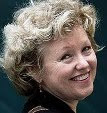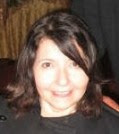by Laurel Corona
Friday, November 23, 2012
Mitzvah Magic
by Laurel Corona
Friday, November 16, 2012
The Gestation of a Very Personal Essay
By Caitlin Rother
It’s only taken me fourteen years, but
I’m proud -- and relieved -- to say that I’ve finally finished a very personal essay.
Frankly, it feels like I’ve completed an intellectual and emotional marathon.
It’s no coincidence that it took me
fourteen years. That’s how long it’s been since my husband committed suicide,
and it’s taken me that long to process and balance the emotions about my
marriage and its tragic end to a healthy enough place that I could write about
this sensitive and inflammatory topic for people other than myself to read.
Until very recently, I didn’t fully
realize that the trauma and the aftermath of these experiences were still
affecting me after all this time. I guess I should have known, because I’d
stopped and started this essay multiple times, feeling like I still didn’t know
how to finish it, or even what it was really about.
It needed to be about more than our
relationship and his death. As I tell my students, you need to know what your
story is about, but you also need to know what it’s really about – in other words, what you, as the writer, discovered
while writing it, which gets incorporated into the piece, the underlying
themes, and also what message you want to leave with the reader. I knew the
answer to none of these underlying questions until just a couple of weeks ago.
I wasn’t always planning to write
about this topic, but as a journalist who has made a name for herself writing
about heavy topics such as bizarre deaths, murder, mental illness and
addiction, it seemed fitting to others that I tell this story.
“You should write about it,” an
editor from Cosmopolitan told me back
in 2001, as we were editing a piece for the magazine about the Kristin Rossum
case, which was the topic of my first book, Poisoned
Love.
“Well, I guess I could,” I said.
It did seem like a good idea at the
time -- what better way to heal myself than to write about the medical and
psychological issues involved in my own story, to try to help and educate
others in the process. But I wasn’t ready. I wasn’t sure why, I just knew that
I wasn’t. I didn’t know where to start.
Some years later, I thought it was
time. So I sat down for several hours and wrote in longhand about the various
memories that I used to relate to people – the worst things, the most shocking
things, because there were many. There were several 911 calls, a call from
jail, a trip to the county mental hospital in the back of a police car, his numerous
trips to rehab. There was fighting, lying, fear and anger. But it all seemed
like a rant, so negative, and so one-sided.
As I discussed the idea with an
editor I was working with on one of the memoirs I was helping someone else
write about his own traumatic and emotional journey, I knew I needed to find
some positive things to say about my own, but I still found that very
difficult.
My husband was a talented and well
respected investment executive who ran the San Diego County Phoenix , Arizona
Recently, I went through some
things in my personal life that brought a lot of these emotions back up again,
and somehow, I managed to break through the paralysis that had
prevented me from finishing this story.
These events finally helped me figure
out what my essay was really about. It
was about me finally reaching the point where I realized I was still hanging on
to emotions I thought I’d already processed, and by writing about this, I was
able to deal with them, find those positive things, and balance myself to a
point where I could let go and move on.
I made some changes to the essay
and added a new ending, then showed the piece to a trusted friend, asking him
if he felt I’d truly finished this time, and resolved the issues for the reader
that I’d felt were hidden or left hanging.
As much as I didn’t want to hear this, he told me that I still wasn’t finished. That it still read like “I had my bra and panties on.” He said I needed to go deeper, reveal even more. Ugh.
As much as I didn’t want to hear this, he told me that I still wasn’t finished. That it still read like “I had my bra and panties on.” He said I needed to go deeper, reveal even more. Ugh.
He suggested that I sit down again
with pen and paper and write longhand, starting with, “I remember…”
I wasn’t sure I could face that,
but I did that the next day, and by golly, the day after that I added 1,500
words to my essay. In the following day or two, I remembered more, and added nearly
1,500 more words. The essay ended up being twice as long, far more balanced and
far more comprehensive than it was before.
I read the new portions I’d just
written aloud to another friend, and when I started to cry, unable to say those
new positive thoughts, those healing thoughts, out loud, I knew I was really
done. I had healed myself, and in the process, my essay as well.
So now that that journey is over, I
am faced with the next step, which is trying to find the right place to publish
6,000 words of this new form of writing, the literary essay, which is a whole
new challenge in and of itself for me.
But that’s never stopped me before.
Onward.
New York Times bestselling author Caitlin Rother, a Pulitzer-nominee who worked as an investigative reporter for nearly 20 years, has written or co-authored eight books: Poisoned Love, Deadly Devotion/Where Hope Begins, My Life, Deleted, Body Parts, Twisted Triangle, Naked Addiction, and Dead Reckoning. Her latest book is Lost Girls, about the murder of innocents Chelsea King and Amber Dubois by sexual predator John Gardner. For more information, please check her website, http://caitlinrother.com.
Thursday, November 8, 2012
A Path Paved By Doing
By Caitlin O'Connell
I woke up this morning with Carol
King’s lyrics in my head: “I feel the earth move under my feet”, before
learning that there had been a strong enough earthquake at 1 a.m. to shake the
bed, causing my dog’s sudden outburst of barking. It wasn’t the moon shadows
cast in an unfamiliar back yard this time. Poor little Frodo spooks easily—but
this time with good reason. There was indeed a quake caused by a shifting of
plates out here in the middle of the pacific where I am ensconced on the most
isolated island chain in the world for another month, partly for paid work as a
scientist and partly fishing for a new perspective for a creative idea that I
hope will bear fruit eventually. Perhaps the margarita or two that I had to
celebrate my first royalty check from the UK (barely enough to finance the
first round, but for me, still worth the celebration) dampened my senses to the
quake because I had no memory of it. But clearly I was shaken enough to allow
King to enter my psyche.
As a writer, I often place myself
in unfamiliar surroundings to facilitate what I view as a “lens” effect to help
focus my writing and energize my senses with a new environment. This physical
and psychological novelty helps to breathe new life into an idea that has
become tired or has languished in writer’s block for too long—or in some cases
gives birth to a whole new and fresh idea much better than the one that I
couldn’t seem to let go of until the new one appeared. Of course dropping
everything and going on a trip this isn’t always a convenient thing to do, but
sometimes there’s only so much rearranging of one’s desk, or massaging of
talismans, headstands, hyperventilation, or whatever it is that a writer finds
helpful to elicit inspiration, before picking up and experimenting with an
entirely new place as a path to inspired writing.
The road to success as a writer for
me started out with a six-figure offer and a deal with one of the top six
houses (the Simon & Schuster imprint Free Press). I was flying high at the
time (as depicted by my horribly naïve enthusiasm captured in this photo taken
on top of Haleakela, Maui when I heard the news) but it didn’t take long to realize
that sustained success was only going to come with incredibly hard work (and
ditching the optimistic photographs). Fortunately, I didn’t quit my day job as
a scientist as the honeymoon quickly turned into the same mountain that I
thought I’d never have to climb again. My agent at the time told me that it wasn’t enough
to write a first book. A second book was not going to be guaranteed. In fact, a
first book that didn’t sell well was almost worse than not having written a
book at all. Really? A tried and true author was not as valuable
as the new new untested thing? That’s what I was told.
Three books later and a new
contract with Houghton Mifflin Harcourt for a fourth and another one pending, I’ve
learned that my path is my own to make and maintain, but not always the desired
one. I’ve had to make sacrifices and write what others have wanted me to write
in order to position myself closer to my vision of where I want to be. I have
written creative nonfiction as a way of developing a writing portfolio, but the
stories I really want to tell require fiction to convey the truth. And although
the nonfiction path is not what I would have chosen, it was a necessary one, one
from which I’ve learned a great deal about how to become a better storyteller—a
tool that I hope will allow me to carve my way into fiction more easily. My
first adult fiction manuscript (based on my first nonfiction book) is currently
being considered and the road hasn’t been smooth but I’m hoping for a new
beginning.
Over the course of my career as a
writer, I’ve had to create my own little earthquakes to shake up my perspective
and help envision the road ahead. I’ve had to be light on my feet, make my own
opportunities and shape my own destiny as a writer because it became abundantly
clear over time that no agent or editor was going to do that for me. I’m the
only one that’s going to move the earth under my feet. In a previous writing
trip to Paris, I latched on to an expression that I read in a Soulages exhibit
at the Pompidou. He said: “It is in doing that we realize what it is that we
are looking for.” These words have become an important mantra for my writing.
For the times that I’ve had the confidence to allow myself to write myself into
a new world with uncharted territory, the story has been much better for it.
And that’s how I hope to continue my writing journey: as a slow but steady path
paved by doing.
Friday, November 2, 2012
How I Became a Novelist and Lived (Learned) to Tell the Tale
By Elizabeth Cobbs Hoffman
Can a dog become a cat? Can a
non-fiction author write fiction?
Historians are plainspoken
creatures. They arrange narratives in the clearest possible order, shining the
bright light of reason on events to illuminate their causes. They are the dogs
of the story-telling world: happy, guileless, transparent.
Novelists are the cats. Subtle and
mysterious, they employ indirection to send readers down blind alleys. They
meander and feign indifference to the auditor’s understanding. Smoke and mirrors are the tools of their trade.
E.B. White observed in The Elements of Style that either the
writer works or the reader works. Historians labor so that the reader doesn’t
have to wonder what’s going on. The novelist, conversely, raises ambiguous
questions. While the historian glories in analysis, the novelist forces the
reader to analyze events for herself.
I wish I had known all
this when I set out to write my first novel after many years of writing history.
It would have saved me a lot of time.
The concept was likely
enough. In teaching foreign relations at San Diego State Unviersity (SDSU), I had long
been entranced by the story of Charles Francis Adams’s duel with Britain during
the American Civil War and his efforts to keep the reigning world power at bay.
The stakes could not have been higher. Liverpool shipyards launched Rebel
cruisers with sickening regularity, and London merchants made substantial
fortunes on the smuggled supplies and equipment that kept Confederate armies
fighting. Aristocrats laughed up their gold-lace sleeves at the United States
putting down—yes—a war of independence.
Charles’s task was to
save the nation his grandfather and father (John Adams and John Quincy Adams)
had built. What was that like? How did he bear the psychic burden? A lesser man
than his progenitors, perhaps, Charles nonetheless had the responsibility for
preserving their legacy. As any historian knows, it’s a great story.
And so fools rush in. I promised
myself I would write the book and thus I had to.
In the course of
eight months, I plowed dutifully through the story of Adams’s ministry to
London and his desperate attempts to foil aristocratic Europe’s hopes for the
dissolution of the American republic. For company, I gave him and his son Henry
a fictional friend from Henry’s days at Harvard College, based upon references
in The Education of Henry Adams. To
this Southern friend, whose allegiance to Virginia tempts him to rush the Union
blockade, I gave the love of a spirited, complicated, too-tall English
gentlewoman. Fine.
It was when I began marketing the
manuscript that I learned how different the historian’s methodology is from the
novelist’s. My writing was too clear and straightforward. And whereas I might
normally make a few phone calls to place a non-fiction manuscript, I instead
sent letter after letter to the list of agents I found in Jeff Herman’s Guide to Book Publishers, Editors, and Literary Agents,
working my way down the list from “A” to “Q.” I received encouraging words with
almost every rejection—but no cigar—until I got to “R.”
My first literary agent, whose last
name began with R, loved the book. She immediately launched an impressive
assault on the New York publishing world. But editor after editor told us they
were accepting no, or very few, new novels because the industry was in the
doldrums. Some said that only women buy fiction these days, and they “wouldn’t
accept” a male protagonist. Others indicated that they liked historical settings,
but didn’t want actual historical characters. A number said they were just not
captivated by my “voice.” Indeed, I heard so often about my “voice” that I
began to think about gargling.
Instead, I drew several favorite
novels from my bookshelf, determined to find out what I was doing wrong. That’s
when I saw the light. My reader’s brain—dashing through prose to follow a
story’s quick path—had never noticed the purposeful, willful convolution of so
much literary writing. Its modus, I realized, was to hint at meanings, not
explicate them.
The lesson was underscored by
reading B.R. Myers’ illuminating essay from the Atlantic Monthly, “A
Reader’s Manifesto.” Myers lays into the intellectual fashion that scorns “any
accessible, fast-moving story written in unaffected prose …[as] ‘genre
fiction’—at best an excellent ‘read’ or a ‘page turner,’ but never literature
with a capital L.” Too many of today’s writers and reviewers believe it is
“more important to sound literary than to make sense,” Myers asserts.
But persistence pays. I went back
and re-ordered bits of my story, dangled odd clues in unexpected places and ironed
the prose to introduce wrinkles. Unwilling to shuck my commitment to clarity as
a historian and friend-of-the-reader, I nonetheless had fun: complicating my
usual streamlined style and trying on new hats. On my first agent’s advice, I finally
decided to self-publish with iUniverse. It was easier to swallow my pride than
my words.
But the story has a happy ending.
Following publication, another agent picked up the book and marketed it
successfully to Random House, which brought out the manuscript in 2011 in honor
of the 150th anniversary of the Civil War. Broken Promises became a “real” novel.
The book subsequently turned out to
be useful in my classroom, as well, where I first imagined what it might be
like to tell the old story in a new way.
Fiction has a pedagogical function.
My own interest in history was first piqued by historical novels as a child.
Fiction forces the reader to watch history unfold as it does in life—looking
forward onto an uncertain future rather than backward onto the dead past.
Contingency, chance, and risk deepen the reader’s empathy. Keeping suspense
alive is the novelist’s daily writing challenge—and something I finally learned
how to do.
This fall my students at
SDSU are reading Broken Promises along
with their non-fiction books. So far, it’s working out. The genres seem to get
along in the classroom. Even better than cats and dogs.
Elizabeth Cobbs Hoffman is the Dwight Stanford Professor of American
Foreign Relations at San Diego State University.
Subscribe to:
Comments (Atom)














